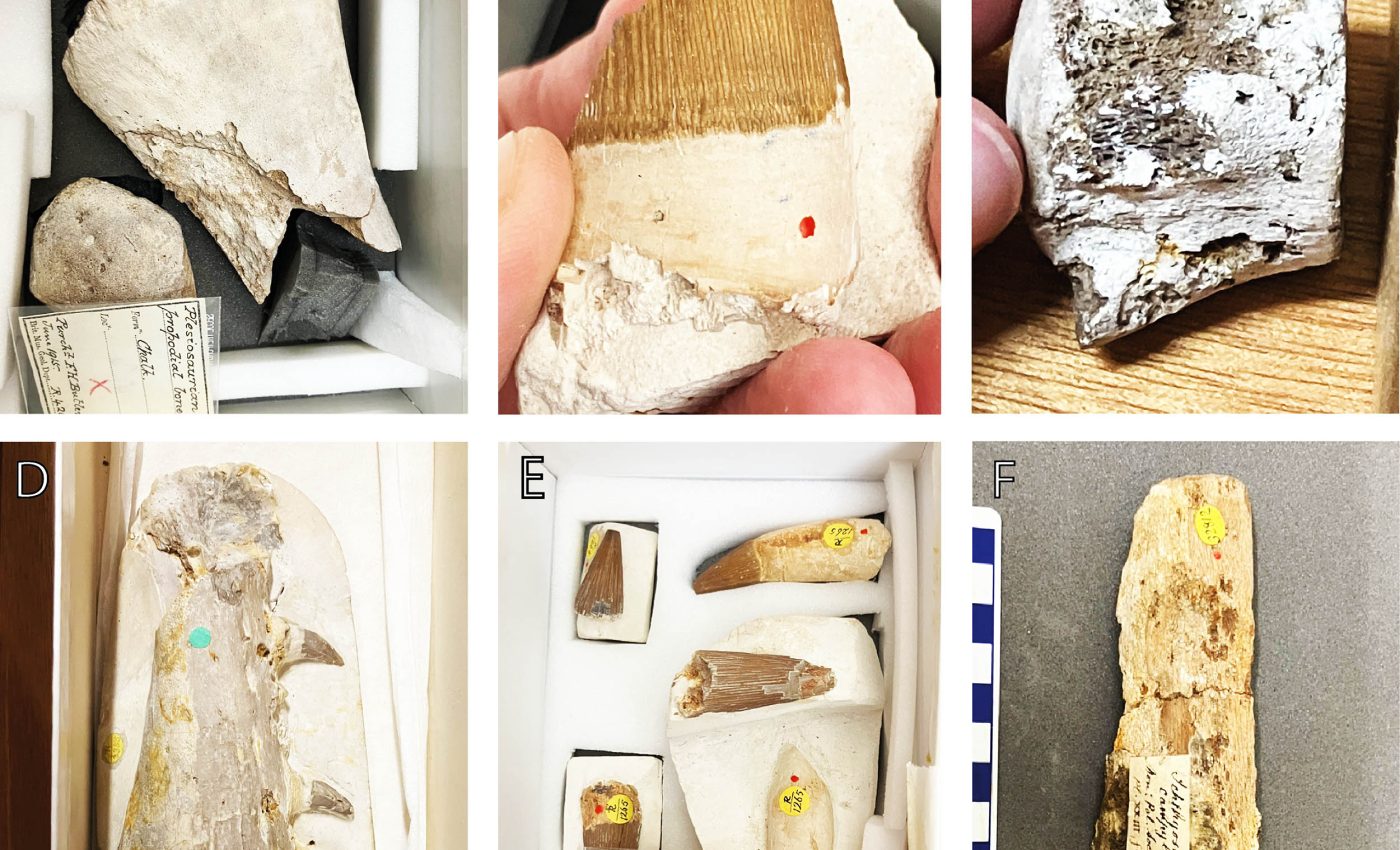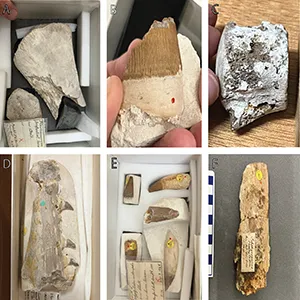
Ancient worms feasted on the bones of giant marine animals
Dead marine giants do not fade quietly. After scavengers strip away the flesh, their sinking bones become banquet halls for specialized worms. These worms drill through the skeleton and siphon its last reserves of fat and protein.
A new survey of those ancient drill marks has identified seven distinct burrow types, revealing just how long these bone-eaters have shaped life on the seafloor.
The study was led by Ph.D. student Sarah Jamison-Todd in collaboration with curator Marc Jones and colleagues at the Natural History Museum of London.
By combing through more than 130 Cretaceous reptile fossils, the team identified distinctive tunnel patterns in the bones. They then scanned the best examples with micro-CT and linked each pattern to a unique “ichnospecies.”
This bolsters evidence that the living bone-eating worms known as Osedax descend from a lineage at least 100 million years old.
Worms feast on sunken bones
Modern Osedax worms colonize whale falls all the way from polar shallows to abyssal plains. Mouthless and gutless, they rely on symbiotic bacteria to digest bone, feeding through root-like filaments and leaving behind bulbous cavities.
Similar traces were found in fossil skeletons of plesiosaurs, ichthyosaurs, turtles, and early whales, hinting at a deep evolutionary history.
“We haven’t found anything else that makes a similar burrow to these animals,” Jamison-Todd explained. “As the ancient bores are so similar to modern Osedax species, and we don’t have body fossils to contradict us, we assume that they were made by the same or a similar organism.”
“It shows the bone-eating worms are part of a lineage that stretches back at least to the Cretaceous, and further. We can see how the diversity of bone-eating worms changes across millions of years.”
Historic bones, new insights
Pinpointing that history meant first nailing down the ages of century-old specimens. “Some of these were collected in the 1800s, and the information on them can be very brief, so it’s difficult to know exactly where they’re from,” Jones said.
“We focused on specimens from the Chalk of the U.K., as our colleagues have been working on better understanding these Cretaceous ecosystems using museum collections.”
“They’re also working to date fossils of an unknown age. By using the remains of small organisms that make up the Chalk itself, we were able to date the fossils to more precise time slices of the Cretaceous Period.”
Worm trails hidden in ancient bones
Armed with refined dates, the researchers searched for borehole entrances scarcely wider than a needle.
“We examined over 130 different fossils for signs of bone-eating worm burrows,” Jamison-Todd said. “However, not all fossils which look like they’ve been bored into by these worms have been – it could have been caused by different animals or environmental weathering.”
“The only way to really confirm this is to put the fossils under a CT scanner. This allows us to create 3D reconstructions of the inside of the bone and see the different patterns that have been left behind.”
The scans revealed meandering tubes, lobed pockets, and tree-like chambers hidden beneath the surface.
Each shape repeated across multiple specimens, convincing the researchers that they marked discrete behavioral blueprints rather than random damage.
Naming the ancient burrow types
Six new burrow types from the Chalk and one from Belgium form a seven-member ichnospecies roster. The names draw on both form and inspiration.
Osspecus arboreum branches like a sapling inside shattered ribs. Osspecus morsus gnaws through tooth roots, its Latin epithet recalling a bite.

The name Osspecus eunicefootia honors Eunice Newton Foote, the overlooked pioneer who first linked atmospheric carbon dioxide to global warming.
Each label provides a shorthand for paleontologists who stumble on similar traces elsewhere. This lets them slot new data into a growing catalog of deep-sea recyclers.
Diversification of bone-eating worms
Bone falls create oases on the otherwise sparse ocean floor, feeding entire communities from bacteria to crabs. Charting how bone-worms diversified illuminates both those ecosystems and the broader carbon cycle.
“There are many more examples of boring that haven’t yet been named from both ancient and modern bone-eating worms,” Jamison-Todd said. “In fact, some bores from the Cretaceous appear to be similar to ones that are still made today.”
“Finding out whether these burrows are made by the same species, or are an example of convergent evolution, will give us a much better idea of how these animals have evolved, and how they have shaped marine ecosystems over millions of years.”
A window into lost oceans
Because Osedax bores only soft, fatty bone, their presence proves that large carcasses once littered even shallow Cretaceous seas. These remains came first from marine reptiles, and later from early whales.
The worms’ longevity also suggests that whenever vertebrate giants die, life quickly evolves to recycle them.
By giving formal names to the delicate tunnels etched in chalky ribs and teeth, the study turns museum drawers into time-lapse images of ecological succession.
Each burrow is a snapshot of a feast that ended eons ago yet still whispers of the unseen engineers who keep nutrients moving through the dark ocean floor.
Image credit: Sarah Jamison-Todd
The study is published in the journal PLOS One.
—–
Like what you read? Subscribe to our newsletter for engaging articles, exclusive content, and the latest updates.
Check us out on EarthSnap, a free app brought to you by Eric Ralls and Earth.com.
—–













